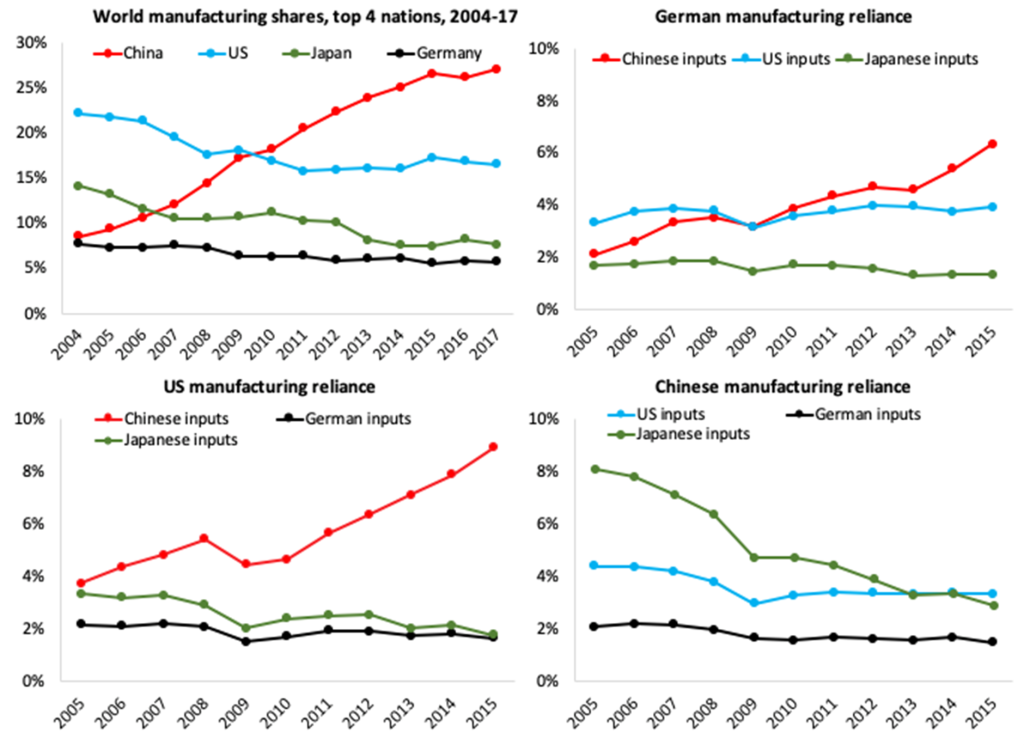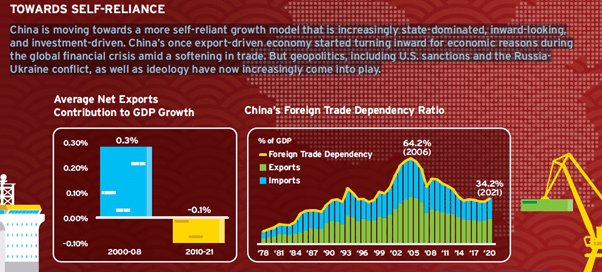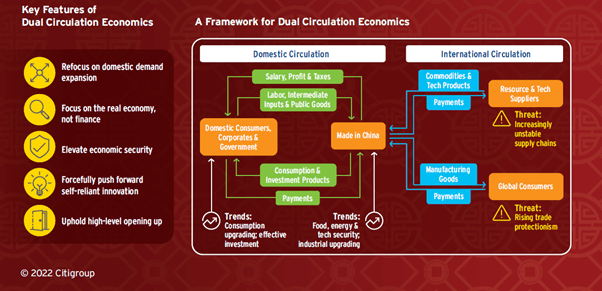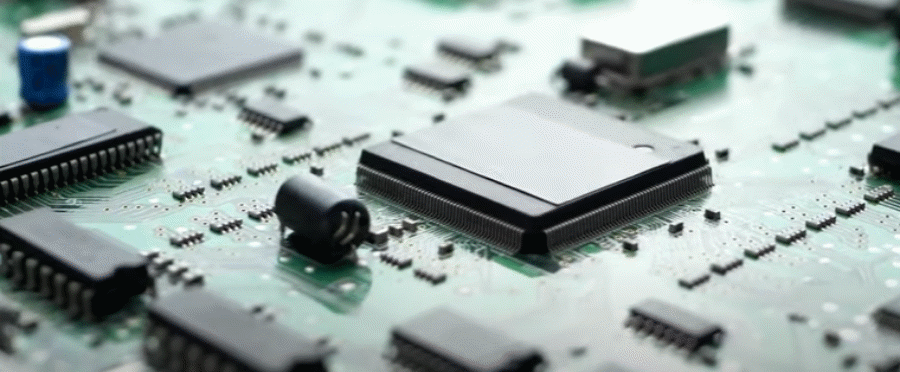By Michael Roberts
Even as Xi Jinping was promising China’s Communist Party’s national congress that China would “resolutely win the battle” in key areas of technology, employees of technology companies in China and elsewhere were being told to down tools. Dozens of the hundreds of executives and engineers with US citizenship or green cards who work in or with China’s semiconductor sector, many of them born in China, have been told by their employers – whether those are foreign or Chinese companies – to stop work while their employers seek clarification of a new US rule that bars US citizens and residents from supporting China’s advanced chip-making industry without a licence.
It is now crystal clear that the US, enabled by a bipartisan consensus in Washington, is determined to stop China upgrading technologically. This has massive implications for Beijing’s ambitions in areas such as artificial intelligence and autonomous driving. The new Chips Act introduced by the Biden administration is accompanied by a 139-page report released by the Department of Commerce’s Bureau of Industry and Security.
Wide ranging impact of the US Chips Act
The report targets not only US companies’ involvement in selling tech products to China but also US persons (i.e. anyone with a US passport or green card). This puts the many founders of Chinese tech companies who were educated in the US, and acquired a US passport on the way, in a seemingly difficult position. It will also make it much harder for Chinese tech companies to attract talent. Similarly, R&D laboratories set up by some Chinese companies in the US now look vulnerable. Alibaba has research labs in Seattle and Silicon Valley while Tencent also has a research lab in Seattle. And US pressure will be brought to bear to stop Holland’s ASML and Japanese companies from supplying China.
All of the above makes it clear the extent to which China is now treated as “an enemy” of the US. This goes far beyond what used to be called “containment”. It also raises the issue of how long Beijing continues to turn the other cheek since, so far, it has done nothing to make life difficult for American companies operating in China, save for its Covid restrictions, on the view that it wants to keep encouraging foreign direct investment.
38% of China’s chip imports this year came from Taiwan
The US move on chips also has big implications for TSMC and other Taiwan companies given the amount of semiconductors Taiwan exports to the mainland. Taiwan’s chip (integrated circuits) exports to China totalled $155bn in 2021 and $105bn in the first eight months of 2022, and accounted for 36% and 38%, respectively, of total Chinese chip imports. Indeed, the most interesting aspect of Nancy Pelosi’s Taiwan trip in early August was her meeting with TSMC founder Morris Chang and chairman Mark Liu, most particularly in the context of legislation on semiconductors passed by Congress in late July which will provide $52.7bn in subsidies to encourage chip manufacturers to build factories in America.
TSMC is already building a fab (semiconductor fabrication plant) in Arizona. Construction of the factory started in June 2021 and its main facility is now reportedly completed, while production is scheduled to begin in 2024. Under the chips legislation TSMC will be required to transfer its technology to the US.
Unlike previous attempts by the Trump and Biden administrations to target specific Chinese companies from accessing advanced technologies (the ban of Huawei was the classic example), the new rules effectively cover every Chinese entity. They, or their US or foreign suppliers, will have to apply for a licence to gain or provide access to advanced chip technologies.
If the US strategy does prove effective – and the response of a wide range of non-Chinese companies operating in the sector in freezing dealings with China suggests it could be – it would cut China off from the critical building blocks of most 21st century technologies.
What’s behind these latest drastic measures from the US?
Why is the US applying these drastic measures against China’s trade and technology? It’s the fear that China could become not just a manufacturing and import source for US consumers, but a rival in every area to US hegemony over the world economy.
What particularly triggered this new policy on China by the US was the global financial crash and the Great Recession. Under its state-controlled model, China survived and expanded while Western capitalism collapsed. China was fast becoming not just a cheap labour manufacturing and export economy, but a high technology, urbanised society with ambitions to extend its political and economic influence, even beyond East Asia. That was too much for the increasingly weak imperialist economies.
The US and other G7 nations have lost ground to China in manufacturing, and their reliance on Chinese inputs for their own manufacturing has risen, while China’s reliance on G7 inputs has fallen.

According to a recent report by Goldman Sachs, China’s digital economy is already large, accounting for almost 40% of GDP and fast growing, contributing more than 60% of GDP growth in recent years. “And there is ample room for China to further digitalize its traditional sectors”. China’s IT share of GDP climbed from 2.1% in 2011Q1 to 3.8% in 2021Q1. Although China still lags the US, Europe, Japan and South Korea in its IT share of GDP, the gap has been narrowing over time. No wonder, the US and other capitalist powers are intensifying their efforts to contain China’s technological expansion.
China has spent more than $100 bn to fast-track the development of a domestic chip-making industry. It is a critical component of its “Made in China 2025 program,” which set out China’s plans to dominate artificial intelligence, autonomous vehicles, next-gen information technology, telecommunications, advanced robotics and aerospace, among other technology-related sectors by 2049.
US policy of “containment”
So the US strategy changed. If China was not going to play ball with imperialism and open up its economy completely to foreign investment and continue to expand its technology base to compete with the US, then it had to be stopped. The recently deceased Jude Woodward wrote an excellent book describing this strategy of containment that began even before Trump launched his trade tariff war with China on taking the US presidency in 2016. Trump’s policy, at first regarded as reckless by other governments, is now being adopted across the board, after the failure of the imperialist countries to protect lives during the pandemic.
The aim is to weaken China’s economy and destroy its influence and perhaps achieve ‘regime change’. Blocking trade with tariffs; blocking technology access for China and their exports; applying sanctions on Chinese companies; and turning debtors against China; this may all be costly to imperialist economies. But the cost may be worth it, if China can be broken and US hegemony secured.
China moves towards self-reliance and ‘dual circulation’ development
The CPC congress emphasized China’s response. “We must adhere to science and technology as the number-one productive force, talent as the number-one resource, [and] innovation as the number-one driving force.”. So Beijing sees the decision to try to freeze Chinese domestic manufacturing above a defined level of technological advancement as deeply provocative. Forcing China to rely on foreign production for the latest and greatest chips plays exactly into Xi’s fear of “technological vassaldom.” So China is moving towards a more self-reliant growth model.

That is the basis of what the Xi leadership calls a ‘dual circulation’ development mode, where trade and investment abroad is combined with production for the huge domestic market.

The dual circulation model was first formally announced at a Politburo meeting in May 2020 and sets out a rebalancing of the Chinese economy away from “international circulation” (the first kind of circulation on which China has relied, namely, reliance on external demand as a stimulus to growth) towards “domestic circulation,” or increasing self-dependence.
Taiwan is a political hotspot for the US and China
The political hot spot for intense conflict between the US and China is Taiwan. Taiwan (Formosa) was taken over by fleeing Nationalist forces in China after the Chinese communists won the civil war and took control in 1949. From the beginning, the Chinese Communist government and the United Nations recognised Taiwan as part of China. But from the beginning, the Nationalists were backed by the US with funds and arms, first with the aim of overthrowing the Communists on the mainland and later, when that became impossible, to maintain the island’s autonomy from China. And since the rise of the Chinese economy, the US and the rest of the imperialist bloc has encouraged moves by the Taiwanese to build and confirm total independence. Taiwan could then become a permanent thorn in China’s side and also the launchpad for military operations against Beijing in the future.
The Russia invasion of Ukraine has given the US and NATO the excuse to intensify the economic, political and military encirclement of China with Taiwan as its hub. By the broadest definition of military intervention, the US has engaged in nearly 400 military interventions between 1776 and 2019, with half of these operations occurring since 1950 and over 25% occurring in the post-Cold War period. these interventions have revolved around economy, territory, social protection, regime change, protection of US citizens and diplomats, policy change, empire, and regime building. The US backed by an extended NATO, no longer confined to the Atlantic seaboard, sees China as the next area for ‘intervention’ down the road.
The Western media helps by continually talking of China’s so-called ‘aggressive behaviour’ and its crimes against human rights. Whatever the truth in those charges, they are easily matched by the crimes of imperialism in the last century alone: the occupation and massacre of millions of Chinese by Japanese imperialism in 1937; the continual gruesome wars post-1945 conducted by imperialism against the Vietnamese people, Latin America and the proxy wars in Africa and Syria, as well as the more recent invasion of Iraq and Afghanistan and the appalling nightmare in Yemen by the disgusting US-backed regime in Saudi Arabia etc. And don’t forget the horrific poverty and inequality that weighs for billions under the imperialist mode of production.
The US-China conflict is the biggest geopolitical issue of this period
But the economic and political conflict between China and the US is the major geopolitical issue of the 21st century – much larger than the Russia-Ukraine war. US National Security advisor Jake Sullivan summed it up recently. “This is a decisive decade… in which the terms of our competition with the People’s Republic of China will be set.”He continued: “The PRC’s assertiveness at home and abroad is advancing an illiberal vision across economic, political, security, and technological realms in competition with the west,” China must be stopped because “It is the only competitor (to the US) with the intent to reshape the international order and the growing capacity to do it.”
China is at a crossroads in its development. Its capitalist sector has deepening problems with profitability and debt. But the current leadership has pledged to continue with its state-directed economic model and autocratic political control. And it seems determined to resist the new policy of ‘containment’ emanating from the so-called ‘liberal democracies’. The trade, technology and political ‘cold war’ is set to heat up over the rest of this decade, while the planet heats up too.

From the blog of Michael Roberts. The original, with all charts and hyperlinks, can be found here.



